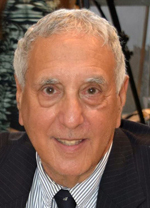By Donald H. Harrison

SAN DIEGO – Monrovia, Indiana, a new documentary by Frederick Wiseman, 88, is a piece that will either fascinate you or bore you to tears. There is unlikely to be any middle ground.
I was one of those who was fascinated by the portrait Wiseman painted, with the help of photographer John Davey, of Monrovia, a town of slightly more than 1,000 people, now wrestling with planning issues for a development that could nearly double the population of the town. As is his wont, Wiseman takes us into meetings and ceremonies of various institutions in helping us to understand the town’s social dynamic.
We attend a school assembly, where we learn how proud everyone in town is of the late NCAA coach Branch McCracken, and later attend a band performance at the Branch McCracken Memorial Gymnasium. We visit and eavesdrop at such venues as a barber shop, café, pizza house, car repair shop, grocery store, exercise class, hair salon, tattoo parlor, veterinary clinic, liquor store, gun shop, restaurant and bar.
We also attend a ceremony bestowing a 50 year award on a member of the local Masonic lodge, and sit in at a church study group, a church wedding, and a church funeral. We also check out the booths at a local street festival, and listen to the local Lions Club approve a motion to pay for a bus bench in front of the town library.
Throughout the documentary, we drive past corn fields, cattle and pig pens.
So, in this white bread town, where, if anywhere, would we find links to a possible Jewish story?
One seemingly unlikely place was the tattoo parlor, where a man getting an additional tattoo already had the words “Psalm 23:4” needled onto his forearm. Most of us know that psalm because it is typically recited at Jewish funerals. As translated in the Stone version of the Tanach, the specific line reads: “Though I walk in the valley overshadowed by death, I will fear no evil, for You are with me. Your rod and Your staff, they comfort me.”
Another scene chilled my Jewish soul. We watched a farmer nonchalantly painting a substance on the backs of some pigs, thus marking them to be taken to the slaughter house. Forgive me, but I could not help but think of Dr. Josef Mengele just as casually selecting not pigs, but Jews and other sentient human beings, to be led to the gas chambers and crematoria of Auschwitz.
Movie maker Wiseman, a fellow Jew, may or may not have had that in mind when he had the sequence filmed. His methodology generally is to film many hours of documentary footage, then to edit together those clippings that he feels best convey his impressions. An exponential amount of the footage he shoots goes unused.
Monrovia, Indiana begins its national rollout October 25th.
*
Harrison is editor of San Diego Jewish World. He may be contacted via donald.harrison@sdjewishworld.com